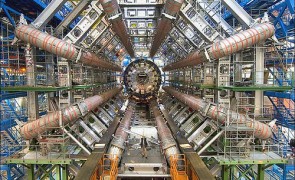Subsequent to the international excitement over Large Hadron Collider, which is buried underneath Geneva, construction has commenced at the Tunka Valley, near Lake Baikal in Russia’s Siberia, to erect a cosmic ray observatory that will contain an array of 1000 detectors encompassing 100 square kilometres.
This observatory’s size will permit the scientists to scrutinise the cosmic rays, which basically mean the space radiation released from gamma rays and bulkier nuclei. The cosmic rays will be fastened to energies greater than those accomplished in the Large Hadron Collider.
The aforementioned observatory, titled HiSCORE (Hundred Square-km Cosmic Origin Explorer), is likely to enable the scientists to resolve the mystification over the origins of cosmic rays. Scientists hope to conduct an inquest into ‘dark matter’.
100 years ago, the renowned Austrian-American physicist, Victor Hess, first uncovered that radiation was permeating Earth’s atmosphere from outer space. The difficulty as regards this issue has always been hunting the origins of cosmic rays, which contain charged particles. Hence, they are deflected in interstellar and intergalactic magnetic fields.
The detectors to be employed are simple and affordable and will be positioned several hundred metres apart. Thus, it will be probable to measure an immense area for the scientists, who can scrutinise cosmic rays within an energy spectrum from 100 TeV to at least 1 EeV.
Each detector can eye the radiation generated when cosmic rays strike the Earth’s upper atmosphere. This engenders a rainfall of secondary particles that move rapider than the velocity of light in air. This creates Cherenkov radiation.
HiSCORE’s state-of-the-art equipments like photomultiplier tubes can help the detection process. HiSCORE is a combined venture, which involves Siberia’s Irkutsk State University, Lomonosov Moscow State University and the Russian Academy of Sciences (Moscow). Also among the collaborators are DESY, Hamburg University and Karlsruhe Institute of Technology (Germany).
HiSCORE can also evaluate molecular gas clouds, thick regions, star-creating zones, galactic plane, etc. which are extended gamma ray releasing structures.
Related:
Experts worry over South Pole’s ecological stability
Neil Armstrong, first ‘moon-walker’, passes away at 82






Add One